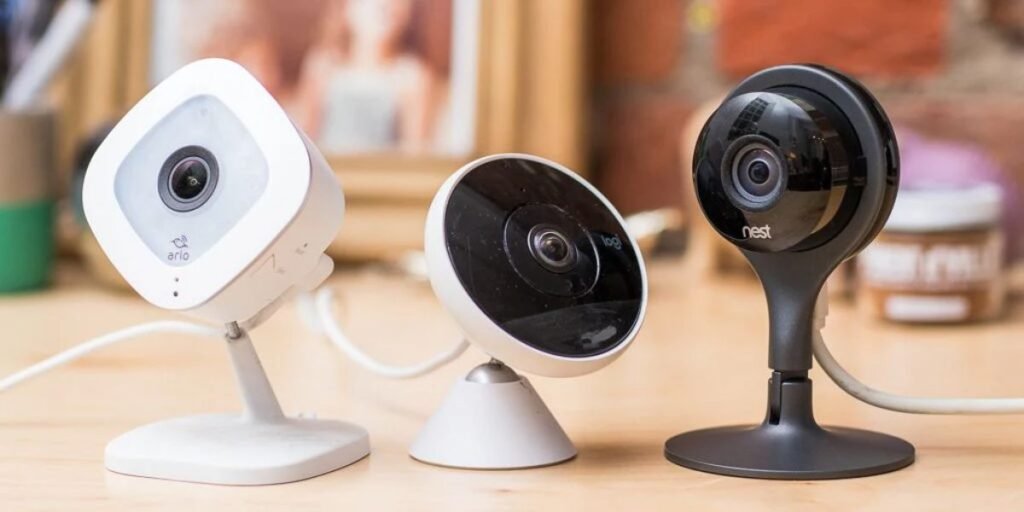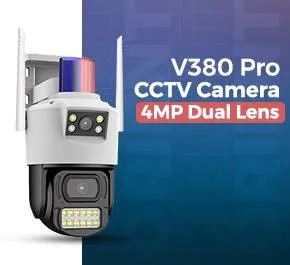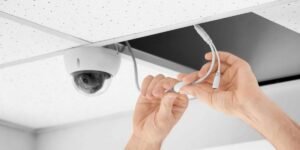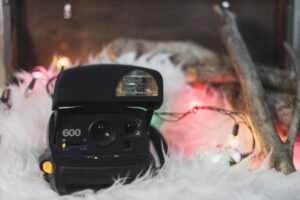Field of View (FoV) and Angle: How to Choose for Wireless Cameras

Have you ever set up a wireless camera only to find it overlooks crucial areas in your home? You’re not alone. In Pakistan, homes often encounter specific security issues, such as crowded neighborhoods or large family settings, making the choice of the right field of view (FoV) very important. The FoV affects how much your camera can see, helping you cover important spots without leaving blind areas.
Let’s dive into this together, step by step, so you can make a confident choice for your peace of mind.
What is the Field of View (FoV) in Security Cameras?
Imagine setting up security for your apartment; every corner should be covered. The field of view (FoV) in security cameras refers to the area your lens captures, measured in degrees, either horizontally, vertically, or diagonally. A 90° FoV covers a room; 120° covers a driveway.
This isn’t just tech jargon; it’s your first line of defense. In wireless setups, where flexibility is key, understanding FoV helps you monitor without constant adjustments. For families juggling work and kids, knowing this means fewer worries about overlooked entry points.
Why FoV Matters More Than You Think
In the busy lives here, security cameras aren’t luxuries; they’re necessities. A mismatched FoV could leave your back gate unseen during evening prayers or miss a delivery at the front door.
It affects clarity, too: too wide and faces blur; too narrow and you lose context. By grasping this early, you tailor your system to your home’s rhythm, no matter if it’s a bustling Karachi villa or a quiet Islamabad bungalow.
Understanding Focal Length and Field of View

Ever wondered why some lenses zoom in sharply, while others capture the big picture? Understanding focal length and field of view starts with this: Focal length is the distance from the lens to the sensor, in millimeters.
Shorter lengths, such as 2.8mm, provide wide angles, making them perfect for overviews. Longer ones, such as 12mm, narrow the view, making it easier to read details like a number plate from a distance.
This relationship is straightforward: As focal length increases, FoV decreases. For wireless cameras, which often run on batteries or Wi-Fi, balancing this keeps your footage crisp without draining power. It’s like fine-tuning a tool to fit your hand, making it both comfortable and practical.
Focal Lengths You’ll Encounter in Wireless Models
Most wireless cameras feature fixed lenses with a focal length of 2.8-4mm, providing 100-110° of coverage for everyday use. Varifocal options let you adjust on the fly, ideal if your home has rooms of varying sizes.
Remember, sensor size plays a role too; smaller sensors in budget models widen the apparent FoV, which suits tight spaces like apartment balconies. Choosing here feels empowering. You start seeing your space through the camera’s eyes, spotting where a wider lens prevents those frustrating gaps.
How to Measure Camera Field of View?
Curious about how to measure a camera’s field of view? You don’t need fancy gear, just basic math and your camera’s specs. First, note the focal length (from the manual) and sensor size (often 1/2.8″ for security cams). Plug into the formula: FoV = 2 × arctan (sensor width / (2 × focal length)).
For example, a 3.6mm lens on a standard sensor yields about 87 degrees horizontally. Test it practically: Mount the camera, mark the edges of what it captures on a wall 10 feet away, and measure the distance between the marks. This hands-on approach demystifies specifications, allowing you to verify them before making a purchase.
Leveraging Tools for Accuracy
Why stop at calculations when online FoV calculators exist? Sites like Omni Calculator let you input details and visualize coverage instantly. For users, factor in local setups and measure from typical mounting heights, such as 8 to 10 feet, on compound walls. This precision ensures your wireless camera aligns perfectly, saving you from returns or regrets.
Choosing the Right FoV for Your Wireless Camera
Key Factors to Weigh In
Selecting FoV isn’t one-size-fits-all; it hinges on your needs. Consider your property’s layout; open courtyards in homes often require temperatures of 120 degrees or higher, while narrow alleys in old towns benefit from temperatures of 60 to 80 degrees to create a focal point. Distance matters too; closer mounts allow more expansive views without distortion.
Engage with this: What keeps you up at night? Intruders at the perimeter or kids playing unsupervised? Match FoV to that priority, and you’ll sleep better.
Assessing Area Size and Layout
Large spaces, such as multi-story houses, require wide-angle lenses to capture multiple units. Compact areas? Opt for moderate FoVs to prevent fisheye warping, which muddies details. Sketch your space and shade in coverage zones to identify overlaps or voids.
Factoring Installation Height and Distance
Mount higher for broader sweeps, aiming for 9 feet for driveways, but test angles to avoid glare from streetlights. Wireless ease means easy tweaks, so experiment. In humid coastal areas like Karachi, ensure the lens stays clear for a reliable FoV.
Wide vs. Narrow FoV
Wide FoVs (100°+) excel in overviews, capturing motion across porches or gardens, but sacrifice zoom on faces. Narrow ones (under 60°) zoom in on doors or gates, aiding identification, yet risk missing side actions. For balanced protection, mix them: One wide for context, one narrow for scrutiny.
In a diverse climate, durable wireless models excel, offering flexibility without wires getting snagged in monsoons.
Tips for Optimizing Your Wireless Camera’s FoV
Start with placement; angle the cameras 15 to 30 degrees downward to mimic human sightlines, thereby reducing underfoot blind spots. Use apps to preview live views and adjust until the coverage feels right. Regularly clean lenses; dust in the dry season can shrink the effective FoV.
Pair with motion detection zones to alert only on key areas, conserving battery. For tech-savvy folks, integrate smart features like auto-tracking, which follows movement within your set FoV. These steps turn a good camera into a great guardian.
If you’re looking for a reliable Wi-Fi CCTV Camera to get started, Orient CCTV offers user-friendly options designed for seamless wireless setups in homes.
Final Thoughts
Choosing the right FoV and angle for your wireless camera boils down to knowing your space and needs. It’s that personal touch that makes your home feel fortified. We’ve covered the essentials, from basics to measurements, so that you can install with confidence. Remember, a well-chosen setup not only watches but reassures, especially in the vibrant yet vigilant communities. Take that next step; your family’s safety deserves it. You can trust Orient CCTV for top-tier Dahua CCTV cameras that excel in FoV precision. Check out our collection for expert advice and installs that fit your life!
Lets's Get Social
We are a dedicated professional company that deliver high-quality cameras all over Pakistan






